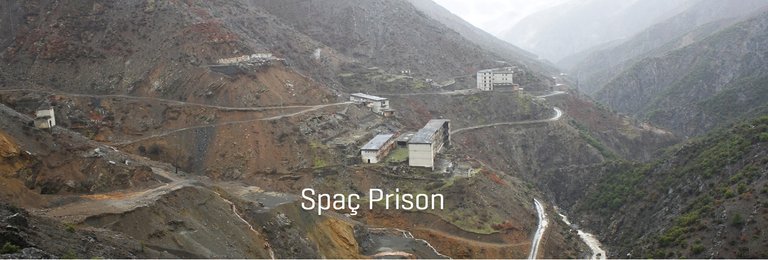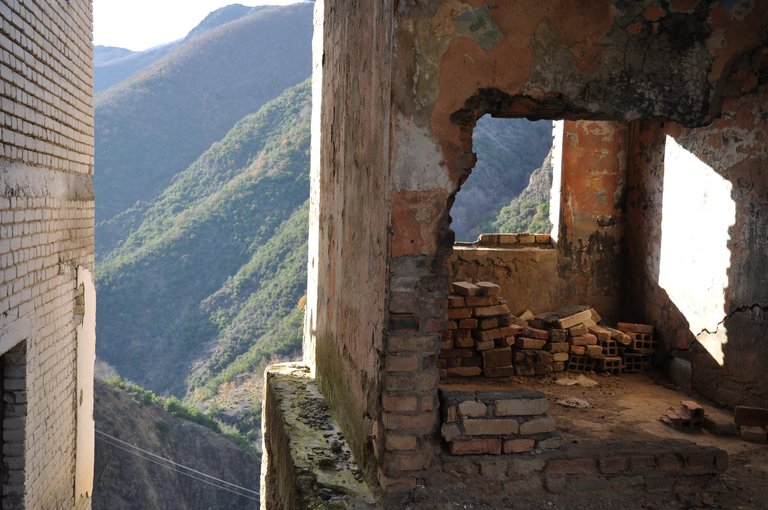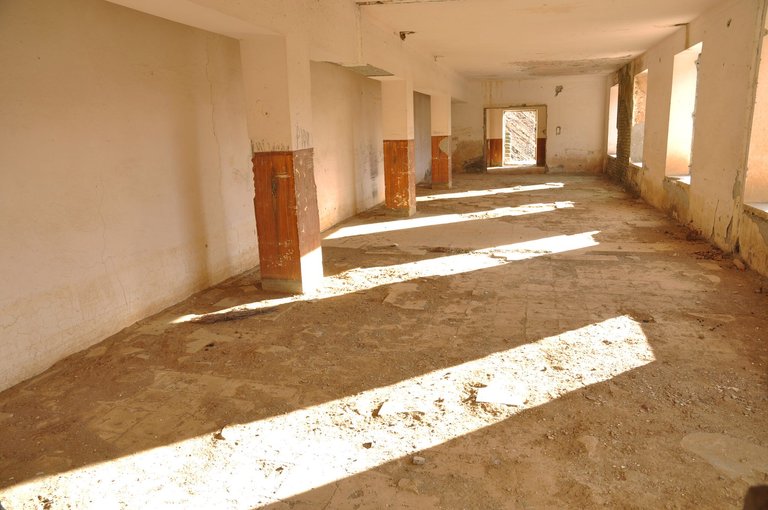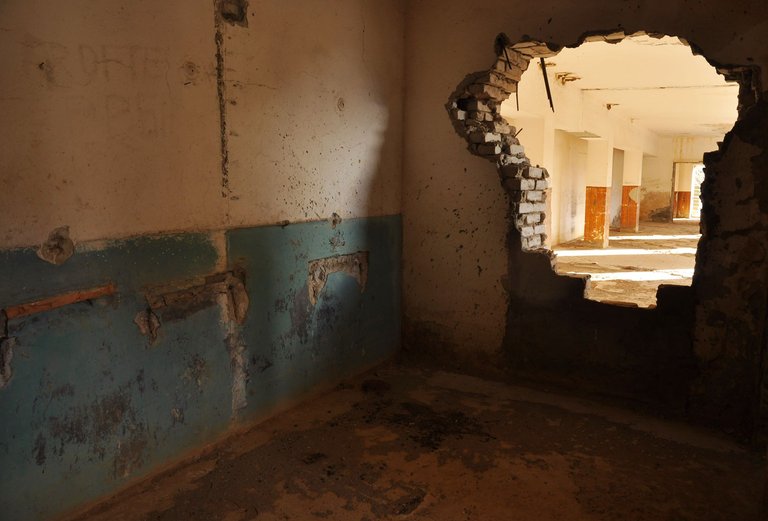Hey Steemers,

This is Spaç, a second category museum in the North of Albania. (Yes, I know. It does not look like a museum!) A political prison of our communist regime. A dark place full of horrors, horrible memories, concrete evidence of the sick human mind. We, Albanians, like to forget about our past when it is more convenient to our personal interests. That is why Spaç has been destroyed continually. According to unofficial sources, the remaining of the prison will be destroyed once public procurement of the cooper mine next to it are accomplished.
Moreover, I would like to mention that the prison has not yet been documented inclusively, as the communist files of our country are still not opened to the public. Actually, there is an uncertainty on the below:
- The real number of prisoners hosted during the years it was functioning
- The number of suicides (People either through themselves in the mine or against the metal grid. When they were jumping into the metal grid, the soldiers would immediately execute them to calm down a possible revolt)
- The number of workers who died inside the difficult working conditions of the mine
- The number of prisoners buried in the common cemetery located in the hill in front of the prison
- The list could get even darker and go on forever...
History of Spaç
Since 2016, the prison is part of World Monuments Watch Project. The below description is actually taken from their website, as the most reliable and objective source I could find.
"Spaç Prison was a notorious labor camp established in 1968 by the Communist government of Albania at the site of a copper and pyrite mine, in a remote and mountainous area in the center of the country. While only one of many such sites, the political prisoners held at Spaç included some of the most prominent Albanian intellectuals of the twentieth century, granting it a special place in the collective memory of that era. The site of the labor camp, on a terraced slope below the tunnel entrances to the mine, was so remote and unforgiving that no perimeter wall was needed to secure the complex, only barbed wire fencing punctuated by occasional guard posts and a front gate. The French-Albanian artist Maks Velo, who was taken into custody in 1978 and sentenced to ten years imprisonment at Spaç, later described it as “the most terrible camp in Europe and I think in the world during this period.”
In May 1973, Spaç Prison became the site of a famed prisoners’ revolt, one of the first moments of resistance to the oppression of the regime. Nevertheless, Spaç continued to operate as a labor camp until the fall of the communist party from power in the early 1990s. It was completely abandoned several years later. Today, even though it has been designated as a heritage site, the complex is in an extremely advanced state of deterioration due to the elements and the abandoned and vacant buildings have lost almost all of their fixtures."
Get a Closer Look Through My Camera
This is how the prison looks while you walk through the beginning till the end. We hired a local guide, who also played the role of the protector when other locals came to steal the materials.

While walking around we observed the red water due to the large quantity of cooper in the soil. The area is all red looking and usually there is a lot of earth falling from the hills. During winter, the area experiences snow blockages and becomes almost isolated.

As you might understand, the regime chose a place from where nobody could escape. One of the many ironies Spaç holds is the fact that its architect was later imprisoned in the prison he, himself designed and projected.

Action Taken
According to World Monument Watch, the very first interventions (excluding individual action by locals) at the site were done in June 2017, by the support of the Swedish Embassy in Tirana. This assistance mainly included site clearance, roof repairs, and structural stabilization of the remains of buildings. However, all the interventions would technically last only for a short- term period. The Minister of Culture of Albania visited the site and declared it as a priority for this Ministry in the upcoming years. In addition, as more research and documentation has been developed, a proposal to expand the protected zone at the site was submitted by the nominators in 2016.
Thank you for coming by and treading my post!
Until next time,
Steem ON
Wow It is very interesting the history that has that place, it is a shame that they forget it and they do not distribute everything that happened there under a regimen comunitas, they should demure it and make it really a museum where they relate everything that happened and people see the atrocities they commit these types of regimes